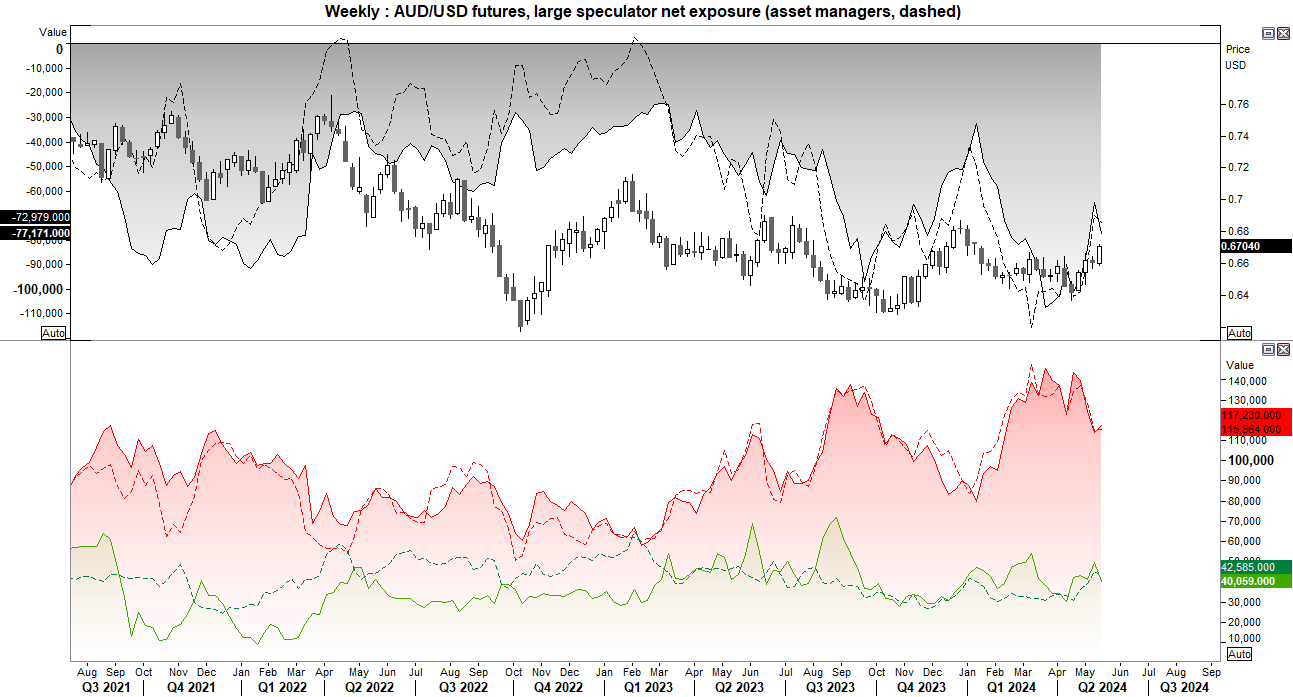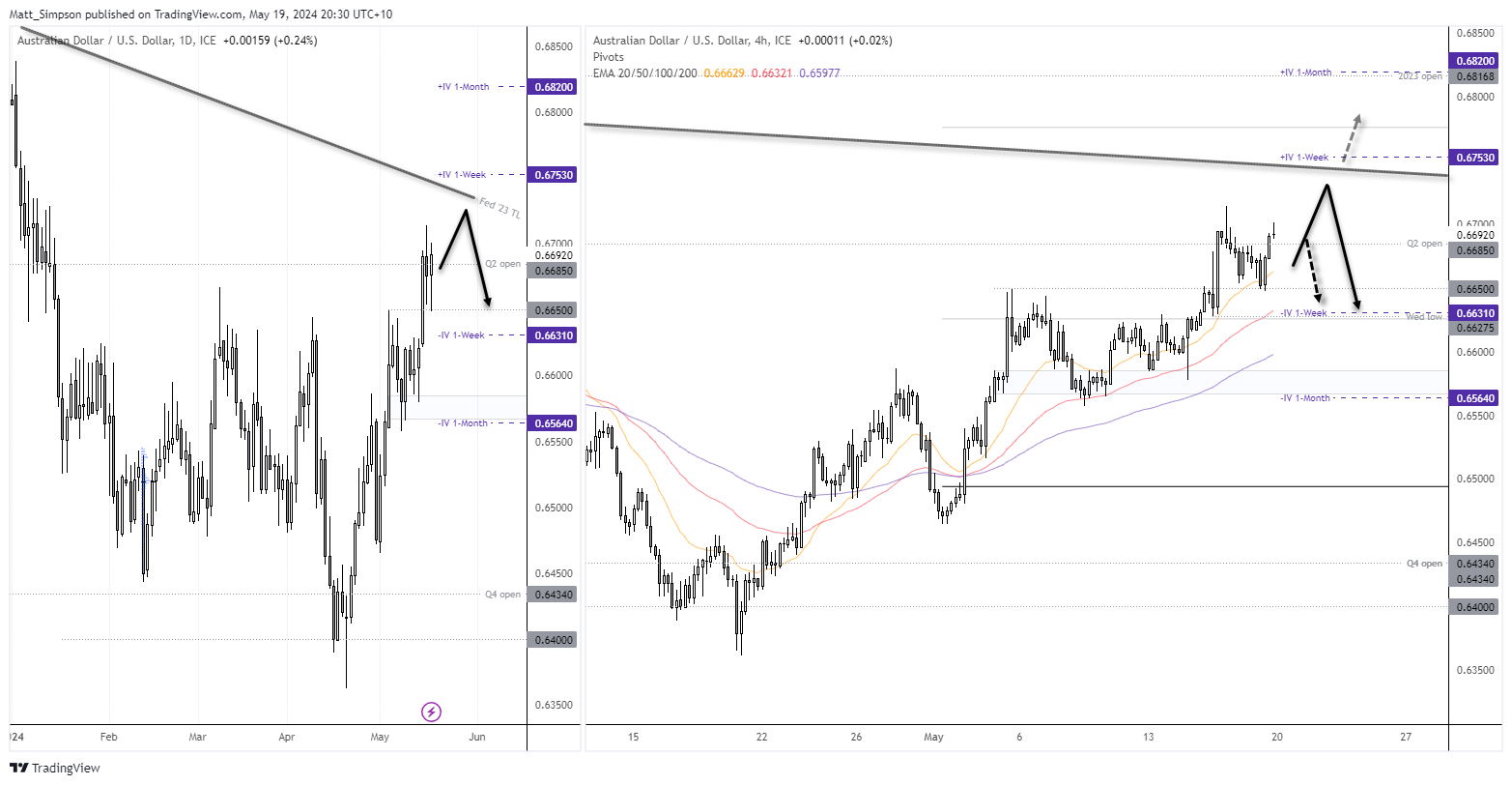

Key themes and events for AUD/USD this week:
There is little in the way of domestic data. At least in terms of anything that may be a market mover. The RBA minutes released on Tuesday are not likely to reveal much we don’t already know; the RBA may hike again if inflation were to turn higher, but for now that seems like an outside chance and rates are likely to remain at 4.35% for the rest of the year.
However, with bets now on that the Fed may actually cut rates at least once this year thanks to softer CPI and NFP data (among others) and lower wages data for Australia, money markets are now trying to price in a cut this year form the RBA. Even if it remains an outside chance.
Whilst not directly linked, CPI reports from the UK and Canada may warrant a look to see if they soften at a rate that excites markets into pricing in global cuts. If consumer prices are easing overseas, it build a case that domestic prices can fall faster in the future too.
The RBNZ are likely to keep monetary policy unchanged on Wednesday. And there is little chance of them switching to an easing bias in their communications. However, they will update their quarterly forecasts so we’ll keep an eye out for any downward revisions (if any) to their inflation numbers and OCR outlook.
Flash PMIs for Australia might provide an inside look at inflation pressures and underlying trends for potential growth an employment, but this is rarely much of a market mover for AUD/USD. However, sentiment from Australian and Japan’s PMIs can sometimes provide a lead on what to expect for the PMI reports across the UK, Europe and US released later that day.
We do have a host of Fed members scheduled to speak throughout the week, with Fed Chairman Jerome Powell himself kicking things off at 05:30 on Monday. Yet looking through the titles and events of many of these speeches suggests monetary policy might not be discussed. And the FOMC minutes released in the early hours of Thursday have likely been superseded by softer NFP and CPI figures from the US.
US data is likely to have the final say where AUD/USD closes as we head into the weekend, particularly inflation expectations from the Michigan University consumer sentiment report. 1 and 5-year CPI expectations unexpectedly rose in the preliminary report, but if they are revised lower if may provide some weakness to the US dollar and support AUD/USD.
AUD/USD futures – market positioning from the COT report:

- Net-short exposure to AUD/USD futures rose for the first week in four among asset managers and large speculators
- Australia’s combination of softer wages and higher unemployment data last week may have seen net-short exposure rise further since Tuesday, although AUD/USD is stronger on the back of a weaker USD (on bets of Fed cuts).
- Ultimately, the ability for AUD/USD to continue climbing is likely down to the US dollar.
- And as the US dollar index is trying to rally from a key bullish trendline / 104 handle, we have a clear line in the sand between for USD sentiment (a break below 104 assumes another leg higher for AUD/USD)
AUD/USD technical analysis
The daily chart (left) shows that prices are meandering around the Q open, and for now AUD/USD seems hesitant to close above 67c. Even if the US dollar falls next week, take note of trend resistance near the upper 1-week implied volatility level around 0.6750, which could be the next major resistance level for bulls to monitor.
However, the 1-hour chart (right) shows an established uptrend with the 20/50/100 EMAs in a healthy bullish sequence. What bulls would like to see early in the week is a pullback towards the 0.6650 area, which may spur about bout of buying with a more attractive reward to risk for a potential move to the bearish trendline ~0.6750.
Should the US dollar regain its footing, a break below 0.6630 suggests a deeper retracement is underway for AUD/USD.

-- Written by Matt Simpson
Follow Matt on Twitter @cLeverEdge



